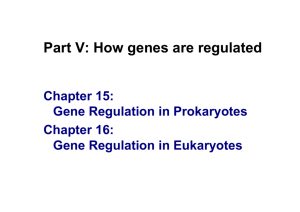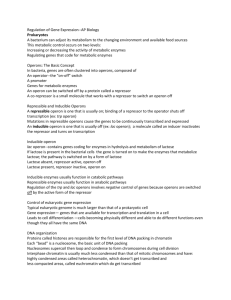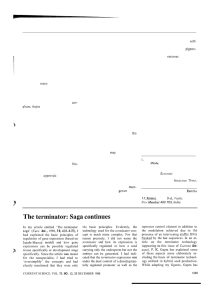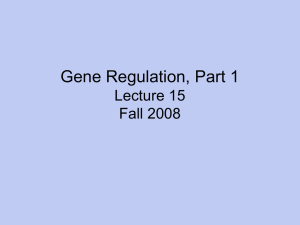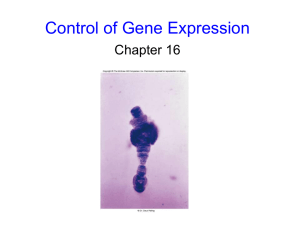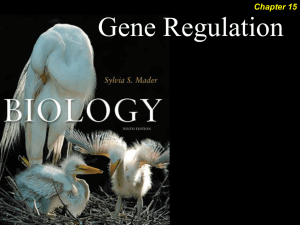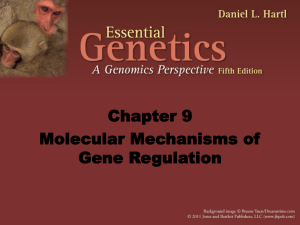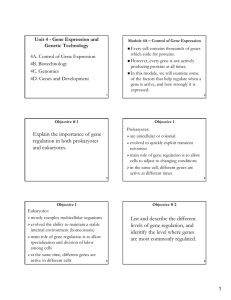control of metabolic pathways
advertisement
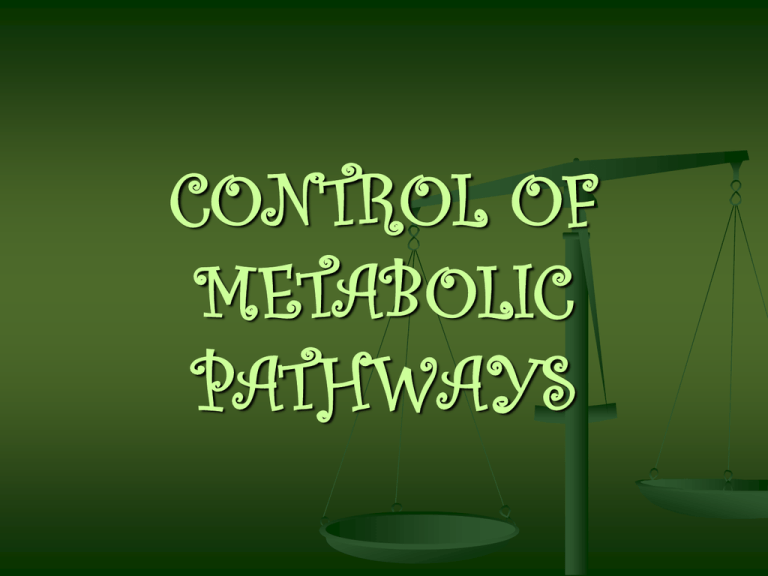
CONTROL OF METABOLIC PATHWAYS Explain what the “one gene – one polypeptide” hypothesis means in terms of producing functional proteins. Enzymes Describe the properties of enzymes and their mode of action:Active site – one or many particular regions of specific shape &/or charge that make up the cleft, into which substrate molecules are drawn in (*induced fit model) Specificity – the protein is determined by the order of the bases in the DNA, in turn the triplets coding for the amino acid sequence of the polypeptide chain (1o structure), and the folding (α-helices and β-pleated sheets – held by H-bonds b/w CO and NH grps , 2o structure, and cysteine aa forming disulfide bridges that give the precise shape, 3o structure) and aggregation of chains to form globular proteins (4o structure). This makes enzymes not only specific in their shape (*lock and key design) and function but also where they are produced (controlled by the rate the reactants and products enter and exit the organelles). Enzymes are proteins whose synthesis is controlled by DNA. Activation energy – enzymes are biological catalysts (speed up reactions without being used up in them). This is achieved by lowering the ‘energy of activation’, due to there lock and key design and induce fit capability, thus influencing reactant bond stability. Control of metabolic pathways – regulating the amount of enzyme activity [Speed forward stimulation (keeping a substrate at a low level by continuing to be produced) and Negative feedback (deactivating the enzyme when there is an abundance of end-product = End product inhibition)] or restriction/compartmentation within an organ/organelle. Anabolic enzymes :A + B AB Catabolic enzymes : AB A + B Metabolic disorders – eg. Phenylalanine (raft of disorders depending on which enzyme is faulty) – we are now able to screen for these disorders eg. PKU. Regulation of gene action – consist of the structural gene (codes for an enzyme), promoter (to which the RNA polymerase binds to begin mRNA synthesis) and operator sites (to which the repressor can bind to block synthesis). Operon Gene induction – eg. Lac operon in E.coli – consists of an operon with a regulator gene (which produces the repressor), located just upstream. When lactose is available some is converted into inducer allolactose, this binds to the repressor thus transcription occurs. Gene repression – eg. By end product – in the Lac operon absence of lactose, results in the repressor being produced and binding to the operator, thus preventing transcription. Transcriptional control in Eukaryotes – Eukaryotes have ‘control elements’, in non-coding region (introns), that regulate transcription by binding ‘transcription factors’ Eukaryotic genes have a promoter region immediately upstream and an enhancer sequence further upstream. Transcription is activated when the hairpin loop in the DNA brings the transcription factors/ activators attached to the enhancer in contact with the RNA polymerase bound to the promoter. Transcription is deactivated when a terminator sequence is reached. [NB. Terminator/stop codons stop translation]. Control elements selectively activate genes at appropriate stages of cell division.
